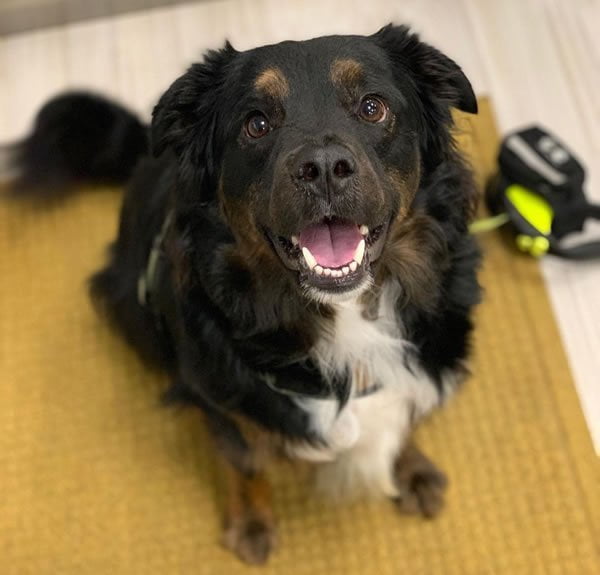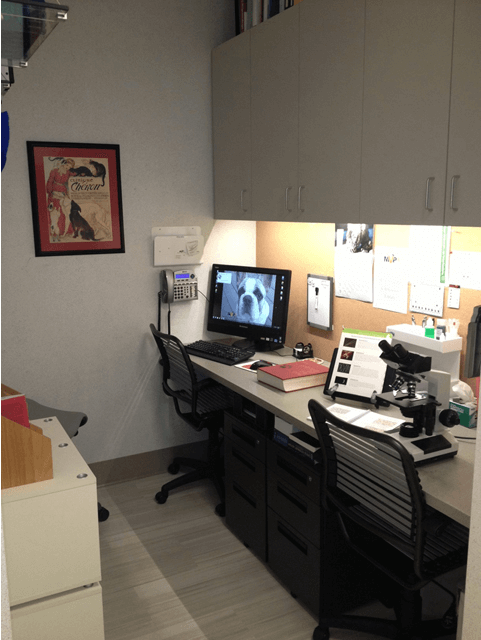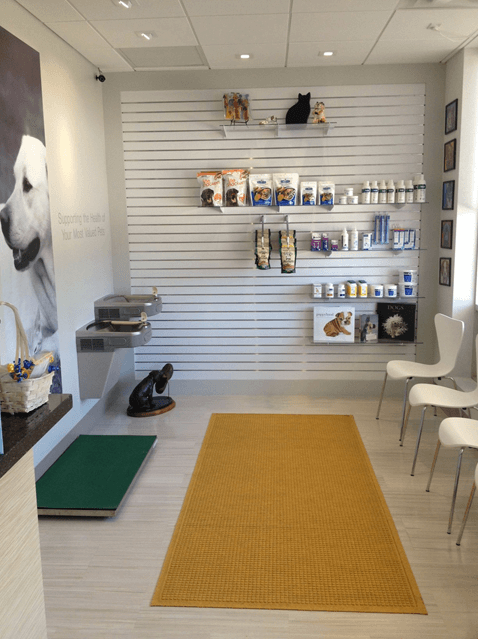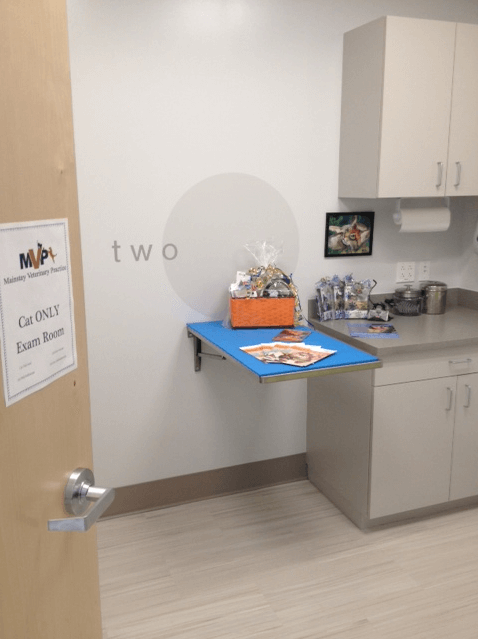Introduction to dental disease:
 Most cats and dogs over the age of 3 have some form of periodontal disease present. Periodontal disease isinfection of the gums and bone surrounding and supporting the teeth. Inflammation of the gums develops due to the body’s reaction to bacteria present in the plaque present on your pet’s teeth. If caught in the early stages, this disease can be reversible with daily at home dental care and a professional dental cleaning to remove the thicker dental calculus. If left untreated, this disease can progress to cause severe bone loss and infection of the affected teeth which causes chronic discomfort in your pet. Some pets won’t readily show their oral discomfort, so it is up to the veterinary staff to evaluate your pet’s dental status annually at their wellness examinations.
Most cats and dogs over the age of 3 have some form of periodontal disease present. Periodontal disease isinfection of the gums and bone surrounding and supporting the teeth. Inflammation of the gums develops due to the body’s reaction to bacteria present in the plaque present on your pet’s teeth. If caught in the early stages, this disease can be reversible with daily at home dental care and a professional dental cleaning to remove the thicker dental calculus. If left untreated, this disease can progress to cause severe bone loss and infection of the affected teeth which causes chronic discomfort in your pet. Some pets won’t readily show their oral discomfort, so it is up to the veterinary staff to evaluate your pet’s dental status annually at their wellness examinations.
The AAHA (American Animal Hospital Association) guidelines recommend all dental procedures be performed under general anesthesia and do not recommend “anesthesia free” dental cleanings. Dental cleanings under anesthesia are much less stressful and safer for your pet and the veterinary staff as your pet won’t be moving during the procedure and will be intubated, which will help to protect their airway from any fluid that is used during the cleaning process. Additionally, cleaning the tartar off the teeth when your pet is awake doesn’t remove the tartar below the gumline, which is the main source of bacteria that causes dental disease. The only way to remove this tartar is during a professional cleaning utilizing anesthesia with your veterinarian. This also allows a more detailed oral examination and to obtain digital dental radiographs of your pet’s teeth. Dental radiographs are important as they can show disease present below the gumline that might not be evident upon probing. We recommend full mouth radiographs so we have a complete picture of your pet’s oral health.
What to expect on the day of the dental procedure:
The day of the dental procedure, we perform an examination of your pet and obtain full bloodwork to assure they are stable to undergo anesthesia. We will then administer sedation and place an intravenous catheter to be able to administer medications and fluids to your pet during the procedure as needed. Your pet’s vital parameters are monitored throughout the procedure. The tartar is cleaned from all of the teeth. A veterinarian then performs a complete oral examination and probing of all your pet’s teeth. Based on the evaluation, your doctor might recommend radiographs and then will determine if the periodontal disease is significant enough to warrant an extraction of the tooth. If there is significant bone loss around the roots of the diseased teeth, this bone will not regrow and will continue to worsen over time and there is a chance that a dental infection could develop in this tooth, which is very painful to your pet and can potentially affect other organs (heart, kidneys, liver). In most cases, the treatment for this is extraction, or removal of the affected tooth. You and your doctor together will determine the best treatment plan for your pet. Your pet be discharged to go home with you that afternoon or evening and written instructions will be provided.
After the dental procedure:
The most important thing to help slow down the progression of dental disease is at home dental care. The most effective way to reduce plaque is by brushing your pet’s outer teeth with pet toothpaste daily, similar to humans at home. This mechanical action helps to disrupt the formation of calculus and plaque. If you are unable to brush at home, we recommend feeding a dental treat approved by the VOHC (Veterinary Oral Health Council). This is a group of veterinary dental specialists who work together to compile research and experience to develop the best dental guidelines for dogs and cats. Do not provide your pet with any antlers or animal bones as these are too hard for the teeth and can cause tooth fractures and possible gastrointestinal upset.
















